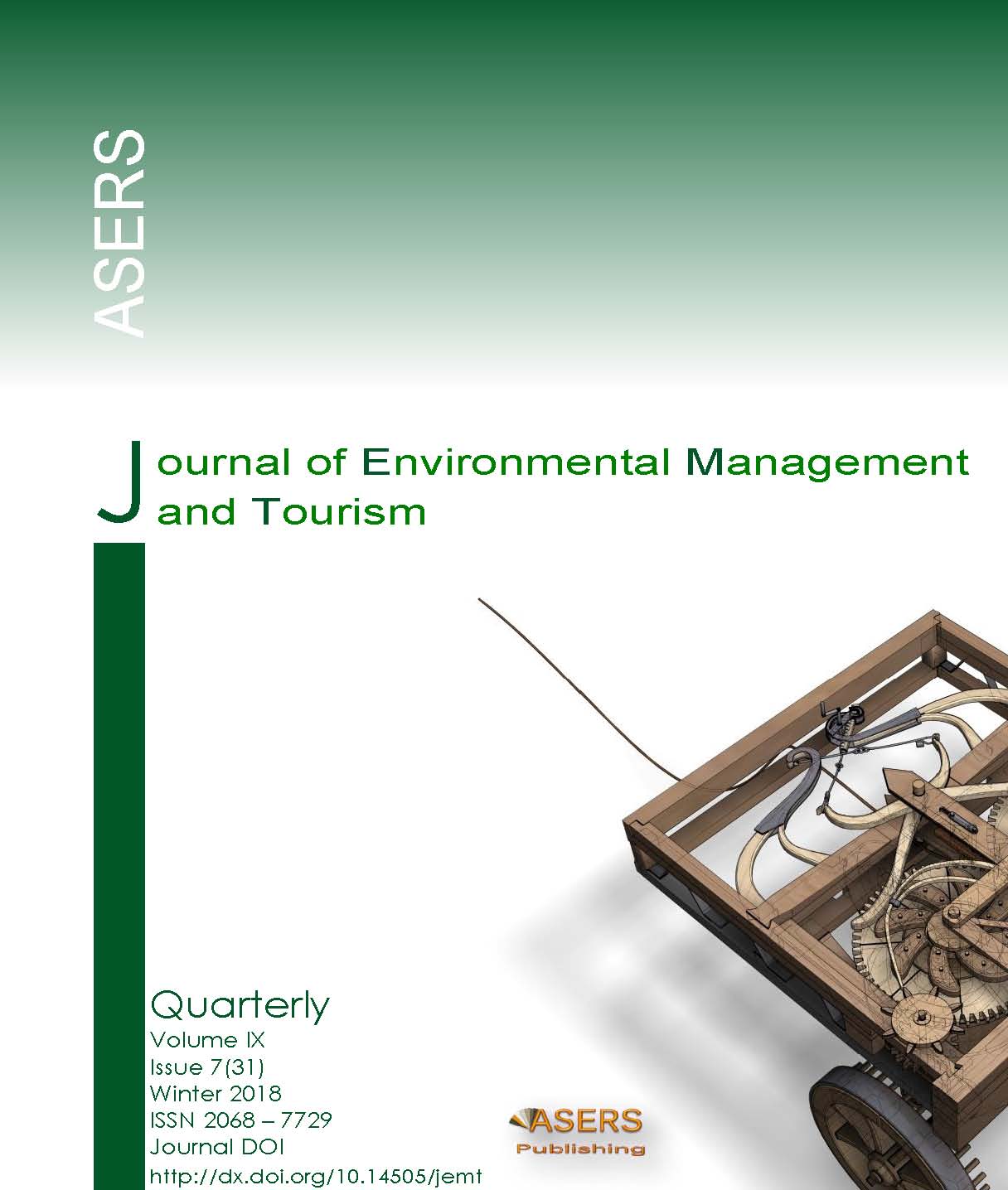Model of Motor Vehicle Gas Distribution Based on Ecology- Health, Economic, Social-Cultural and Law Factors in the City of Pekanbaru
Abstract
Air pollution will make the city environment unhealthy and can interfere with human health, therefore one must strive to not increase air pollution. One way to reduce air pollution in cities is to reduce carbon emissions and build Green Open Spaces (GOS). Therefore, the purpose of this study is to create a model for distribution of motor vehicle exhaust emissions in the city of Pekanbaru. Air pollution at a certain level can be a combination of one or more pollutants, either in the form of solids, liquids or incoming gases dispersed into the air and then spread to the surrounding environment. Further analysis of environmental factors in the form of socio-cultural, economic and ecological factors are explored in this study. Other important environmental parameters in pollutant studies are ecological factors as well. While the economic factors in question is the willingness to pay, it shows the minimum cost needed to anticipate the amount of exhaust emissions caused by motorized vehicles and calculate the economic value associated with public health. The emission of gas produced by each vehicle is below the predetermined standard quality threshold, namely LH Regulation No. 12 of 2010. Although the measurement results in Table 1 do not exceed ambient air quality standards, but the increase in a trend that can cause air quality deterioration was detected. The components in these two strategies need to get more emphasis and attention so that the existence of charcoal trading business can be sustainable. The results obtained from this study are a model of exhaust gas distribution in the form of gas emission distribution contours supported by ecological data (E), economics (E) and socio-cultural (S), especially in creating recommendation models in policy making both in the form of laws, government regulations or regional regulations, which is the simplest prerequisite for motor vehicle owners when the vehicle registration is extended. This model is better known as the E2S + H model.
References
[2] Committee on State Practices in Setting Mobile Source Emissions Standards, 2006. State and Federal Standards for Mobile-Source Emissions, the National Academy of Sciences, United States of America. Available at: https://www.nap.edu/catalog/11586/state-and-federal-standards-for-mobile-source-emissions
[3] Directorate General Land Transport, 2012. Perhubungan Darat Dalam Angka, PDDA: Jakarta, Indonesia. Available at : http://hubdat.dephub.go.id/pdda2012
[4] Erin L at al, 2018, Exposure Assessment of Ambient Sulfur Dioxide Downwind of an Oil Refinery in Curaçao, Journal of Environmental Protection, 9: 194-210. Available at : https://file.scirp.org/pdf/JEP_2018032215122285.pdf
[5] Environmental Protection Agency 2016. Greenhouse Gas Inventory Guidance Direct Emissions from Mobile Combustion Sources. Available at: https://www.epa.gov/sites/production/files/2016 03/documents/mobileemissions_3_2016.pdf
[6] Fauzi, A., and Ana, S. 2005. Fisheries and Marine Resource Modeling for a Policy Analysis, Gramedia Pustaka Utama, Jakarta.
[7] Guoxiang, L. 2012. Greenhouse Gases – Emission, Measurement And Management Published By Intech Janeza Trdine 9, 51000 Rijeka, Croatia. Available at: https://www.intechopen.com/books/greenhouse-gases-capturing-utilization-and-reduction
[8] Hindun, K, N., Ilya, F., and Khai M., 2012. Studi Persepsi Masyarakat Terhadap Kualitas Lingkungan Permukiman di Dusun Jaban. Prosiding Temu Ilmiah IPLBI. Available at: https://temuilmiah.iplbi.or.id/wp-content/uploads/2012/10/TI2012-04-p037-040-Studi-Persepsi-Masyarakat-terhadap-Kualitas-Lingkungan-Permukiman-di-Dusun-Jaban.pdf
[9] Lelia, C., and Maria. S. 2018, How Much Does Environmental Degradation Cost?. The Case of Morocco, Journal of Environmental Protection, 9: 254-265. Available at : https://file.scirp.org/pdf/JEP_2018032715335198.pdf
[10] Muhammad, E., Aminullah, and dan Soesilo, B., 2001. Analisis Sistem Dinamik Lingkungan Hidup, Sosial, Ekonomi, Manajemen, UMJ Press, Jakarta. Available at : http://www.worldcat.org/title/analisis-sistem-dinamis-lingkungan-hidup-sosial-ekonomi-manajemen/oclc/66593747
[11] Irawan, Bagus R.M. 2008. Pengaruh Methanol Terhadap Pengurangan Emisi Gas Buang Carbon Monoksida pada Kendaraan Motor Bensin. Jurnal Traksi, 6(1): 39-47. Available at: https://jurnal.unimus.ac.id/index.php/jtm/article/view/616/668
[12] Patterson, J., and Perl, A., 2007. The End of Cheap Oil: Crossroads for Kyoto. Energy Sources, Part B, 2: 105-111. https://doi.org/10.1080/15567240600814870
[13] Patterson, J. 2010. Exploitation of Unconventional Fossil Fuels: Enhanced Greenhouse Gas Emissions, Concordia University Canada. Available at: http://cdn.intechopen.com/pdfs/32346/InTech-Exploitation_of_unconventional_fossil_fuels_enhanced_greenhouse_gas_emissions.pdf
[14] Pemerintah Provinsi Riau Dinas Pekerjaan Umum Dan Penataan Ruang, 2017. Laporan Survey LaluLintas, Jalan Arengka Review DED Fly Over Pasar Pagi PT. PLATO ISOIKI, Pekanbaru.
[15] Prawiro, Ruslan H. 1988. Ekologi Pencemaran Lingkungan, Satya Wacana, Semarang. Available at: http://onesearch.id/Author/Home?author=Ruslan+H.+Prawiro
[16] Boulter, P.G., Borken-Kleefeld, J. and Ntziachristos, L. 2012. The Evolution and Control of NOx Emissions from Road Transport in Europe. Available at: file:///C:/Users/Lenovo%20E10-30/Downloads/9783642384509-c1.pdf
[17] Howarth, R. W. 2014. “A Bridge to Nowhere: Methane Emissions and the Greenhouse Gas Footprint of Natural Gas”, Energy Science & Engineering Published by the Society Of Chemical Industry and John Wiley and Sons Ltd., (1): 1-14. Available at: https://onlinelibrary.wiley.com/doi/full/10.1002/ese3.35
[18] Sugiarti. 2009. Gas Pencemar Udara Dan Pengaruhnya Bagi Kesehatan Manusia Air Pollutant Gasses and the Influence of Human Health. Jurnal Chemica, 10: 50-58. DOI:http://dx.doi.org/10.26858/chemica.v10i1.399
[19] Suratmo, F.G. 2002. Panduan Penelitian Multidisiplin, IPB Press, Bogor. Available at: http://library.borneo.ac.id/index.php?p=show_detail&id=1037&keywords=
[20] Syahril, Sukendi, Zulkarnain, Juandi. M, and Muhammad, K. D, 2018. Fluid Actual Velocity Model for Mitigation of Pollutant Contamination In Pekanbaru City Advances And Applications, Fluid Mechanics Journal, 21 (3): 367-377. http://dx.doi.org/10.17654/FM021030367
[21] Sugiyono. 2015. Statistik Non parametris Untuk Penelitian. Penerbit Alfabeta, Bandung.
[22] Sunil J. Kulkarni, and Nilesh L. Shinde. 2014. A Review on Hydrogen Sulphide Removal from Waste Gases”, International Journal of Advanced Research in Science, Engineering And Technology, 1 (4): 187-189. Available at: http://www.ijarset.com/upload/2014/november/4_IJARSET_Kulkarni_20.pdf
[23] Tanmay. U.G, Veena.R, and Sunil.K. 2015. Various Methods to Reduce SO2 Emission - A Review”, International Journal of Advanced Research Foundation, 1(1): 1-6. Volume 2 (6): 11-17. Available at: http://ijarf.com/wp-content/uploads/2015/07/IJARF-11-17.pdf
[24] Victoria Transport Policy Institute, 2011, Transportation Cost and Benefit Analysis II.Australia. Available at : http://www.vtpi.org/tca/tca00.pdf
Copyright© 2025 The Author(s). Published by ASERS Publishing 2025. This is an open access article distributed under the terms of CC-BY 4.0 license.
